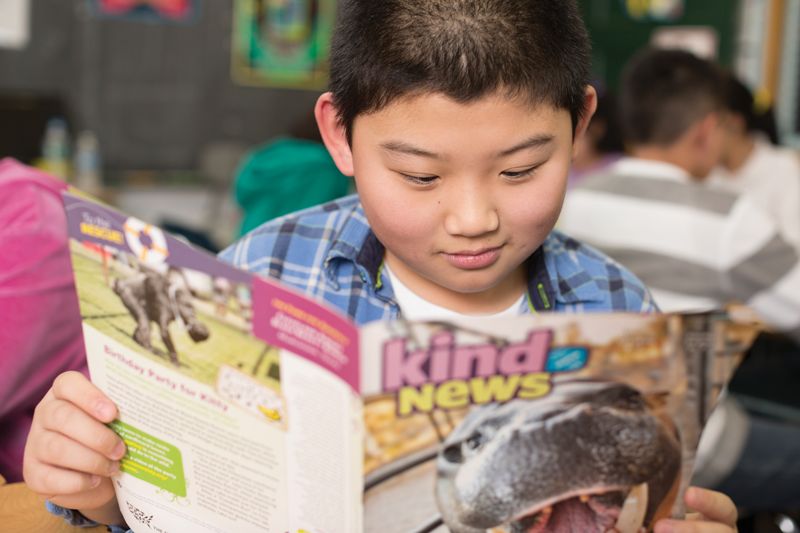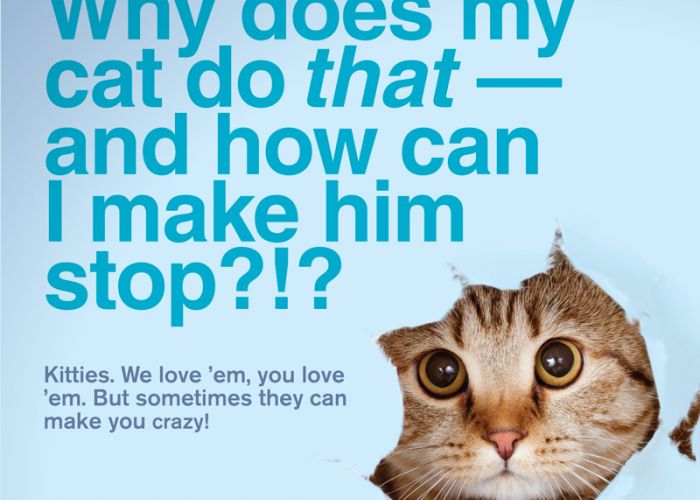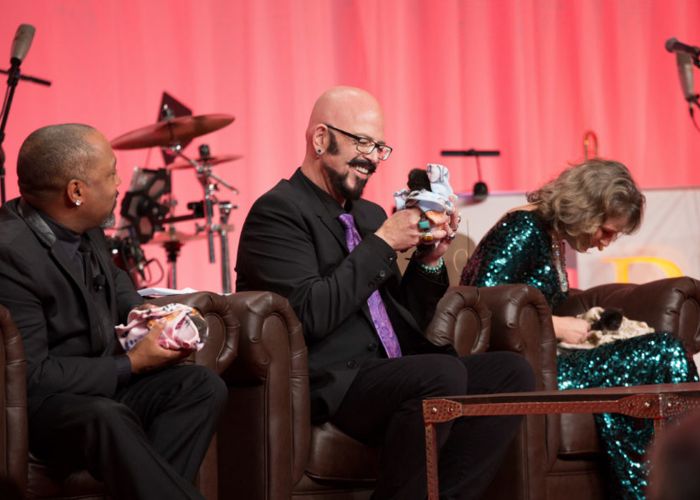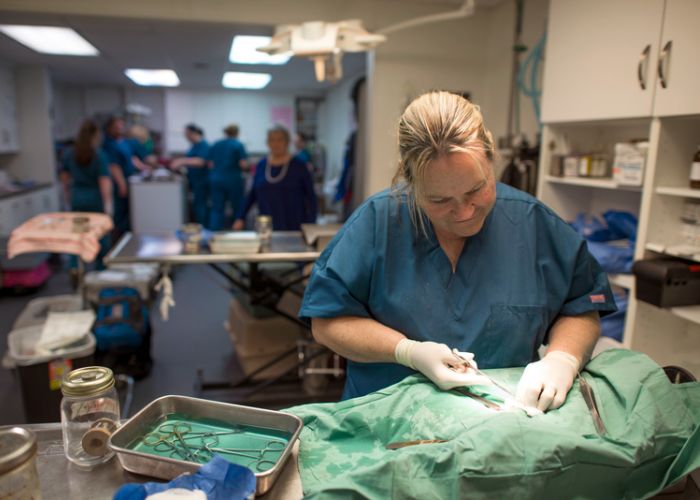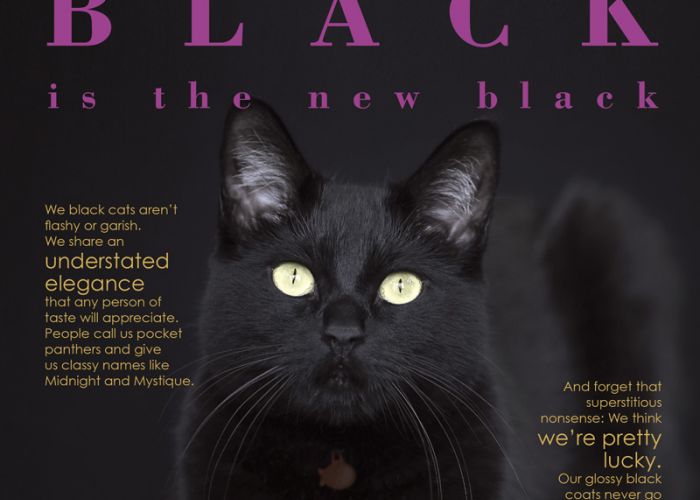Shaping kinder kids
The long-term dividends of humane education
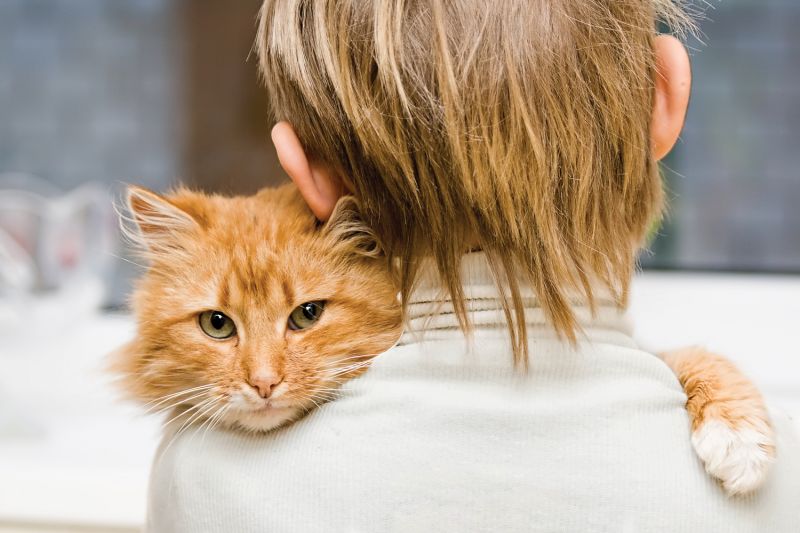
As animal welfare leaders continue to push the sheltering and rescue field into the future, finding new strategies to tackle the roots of animal homelessness and cruelty, it pays to keep in mind that kindness has roots as well.
Reaching children at early ages with messages of gentleness, empathy and compassion—for humans and other animals alike—is one of the critical means of watering those roots, shaping not only kinder citizens, but engaging future generations in the cause that’s central to so many of us. In this section, we profile some people who may be inspiring the animal advocates of the future, and hear a passionate argument for prioritizing humane education.
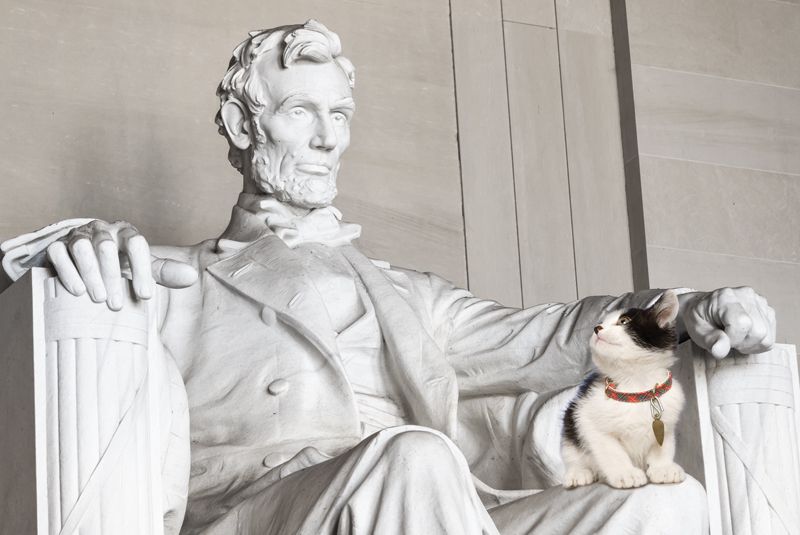
Humane Abe
HSUS senior policy adviser and historian Bernard Unti recalls one of Lincoln’s lesser known legacies
One of the greatest authenticated anecdotes about the greatest of American presidents concerns his speech advocating kindness to animals, given when he was still a boy, in a classroom along the frontier in the early 1820s. There is no exact record of his remarks, but one witness recalled that “Abe preached against cruelty to animals, contending that an ant’s life was to it, as sweet as ours to us.”
Abraham Lincoln’s formal schooling lasted only a few months, but I think it’s sublime to imagine the man who would go on to author the Gettysburg Address cutting his oratory teeth with a talk to schoolmates about the need to do right by animals. It’s no surprise that Lincoln has long been a hero for humane advocates, the very model of a kindhearted person who was nonetheless up to the challenges of governing a nation in turmoil and conflict.
As young Lincoln’s speech demonstrates, humane education pre-dates the animal protection movement itself. It came into its own in the mid to late 18th century under the influence of British philosopher John Locke, whose theory of environmentalism gained a large following among the authors and consumers of children’s literature. Locke argued that environment and socialization—not genetic inheritance—shape human character. His views inspired authors to produce books for children that emphasized socially desirable values and behaviors, and motivated parents to buy them. Such works encouraged piety, faithfulness, duty, truthfulness and kindness to animals, among other traits, and children loved them.
When the first animal protection societies formed in the United States, in the years following the Civil War, most of them had humane education programs, and this remains true for many local societies today. I’ve long contended that any movement with vision and aspirations should plan and prepare for the socialization of future generations, inspiring and informing young people who must become the champions and stewards of that movement’s progress. In humane work, there is no investment of time and effort that pays a greater long-term dividend than that which we make in teaching children the basic tenets of kindness to animals and associated values.
With the increased interest in preventing bullying, violence and other forms of cruelty among children, schools may be more inclined to take an interest in programs offering solid character education materials. It is clear to me that the future of humane education lies with community-based organizations and individual educators committed to reaching young people, whether directly through the school system or through afternoon or weekend programs.
At the local level, humane education is thriving, despite challenges that include limited resources, core curriculum mandates, the demands of program evaluation, the need for teacher training and the politicization of the classroom. The internet abounds with examples of good programming being carried out worldwide and has supported the emergence of a true community of practice, one with global reach. Individual educators employed or working as volunteers with community-based organizations are finding ways to connect with young people both in and outside the classroom, and I’m certain that humane education has a bright future.
I believe that every animal care and services department, every humane society and SPCA, and every rescue group should have a humane education program in place, however modest. One of the sad truths about humane education is that, while everyone in the field tends to recognize its value and support it in theory, few are willing to pay for it.
We must embrace our challenges in this arena constructively and energetically. Today, few national organizations are leading in this realm, making it all the more important that we build and support humane education from the grassroots up. Because it is intertwined in discussions of the moral development of children, the challenge of global sustainability, and the relationship of humans to the natural environment and all of its inhabitants, humane education is profoundly connected to our future as a society. In an era of climate change, unbridled development and other threats to human and animal well-being and survival, we need humane education more than ever.
I’m truly pleased about the continuing progress we’re seeing in the professionalization of humane education, as evidenced by the vitality of the Association of Professional Humane Educators, the Certified Humane Education Specialist program of the Academy of Prosocial Learning, the curriculum and outreach work of HEART (Humane Education Advocates Reaching Teachers) and RedRover, and other initiatives. The development of professional cadres is essential to the further establishment of humane education, because it is through their work that we’ll lay the social, cultural and psychological foundations for a truly humane society. It’s one of the reasons that I have committed more and more of my time to speak in favor of humane education and to train practitioners at the annual HSUS Animal Care Expo, at regional conferences and in other forums.
I’d like to see humane education become a stronger priority for foundations that support animal protection and for the larger national organizations. But it can flourish even in the absence of such backing, so long as our grassroots and community-level institutions are willing to show the way. Anyone can become a humane educator or public speaker with a bit of training and guidance.
I can think of many things I’d like to learn about humane education over the next few years. Can we promote a higher standard for evaluation and assessment, one that vindicates humane education’s longstanding promise? Can it help to unlock the key to children’s developing ideas about animals and the need to protect them? Just how do its lessons and impacts carry on into adulthood?
I’ve said elsewhere that humane education is the ultimate act of faith for the field, investing in the idea that there are young people out there, waiting to hear our message and to get involved. I once saw a headline in an old HSUS publication, “Tomorrow’s humanitarians are in today’s classrooms.” I certainly hope so, just as I hope to see other animal protectionists take up the challenge of supporting our outreach to those advocates of the future.

Captivated audience
Teacher creates bookworms with dolphins and dogs
“It truly was magical how it all fell together,” Susan Kosko says about the 2011-12 school year, when she introduced her second-grade students to dolphins.
The idea had come the year before, when Kosko and her family took an eco-tour aboard the Dolphin Explorer in Florida. Kosko, who teaches reading at Crafton Elementary School in Pittsburgh, watched her young son and daughter fall under the spell of the dolphins, and she began to wonder what the charismatic creatures could do for struggling readers in her classroom. She later learned that the boat’s dolphin research team was launching an environmental studies program, using Skype videos to share their adventures with classrooms.
Kosko began using the videos of dolphins 1,200 miles away in lessons based on the book Dolphin Tale: The Junior Novel. Her students were as wide-eyed as her own kids, she says: “[They] wanted to run into the room to learn more—and one book led to another.”
When her students saw that a young dolphin named Seymour had become entangled in fishing line, they were eager to help with fundraising—and later watched Seymour’s rescue and release by a team of marine mammal experts.
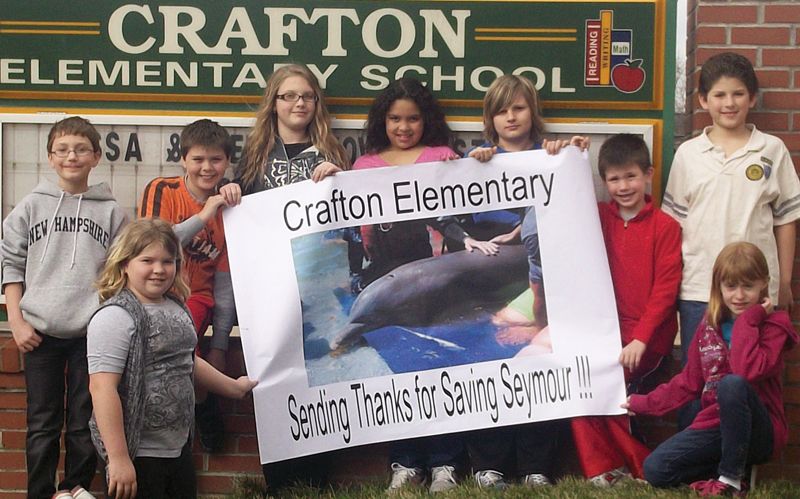
Their enthusiasm was visible in other ways: Over the first year of the program, Kosko saw her students’ reading fluency increase more than 40 percent—the largest increase in the history of her program.
The results affirmed her long-held belief that learning needs to be fun, engaging and “attached to the real world.” The lessons in a standard curriculum are often too dry for young minds, she says, whereas animals never fail to captivate them.
For the past 15 years, she’s organized a Reading to Rover program in partnership with Animal Friends, a local shelter. Students who struggle with oral fluency read aloud to a nonjudgmental, furry audience. (Last school year, her class collected supplies and $800 in donations for the shelter.)
Kosko’s lesson plans are always evolving as she looks for new ways to connect kids to the natural world. In 2014, she partnered with the local Audubon Society to establish a schoolyard habitat garden where students learn about insects, birds and other local wildlife. Last year, she introduced her students to elephants and reading materials that describe the plight of the world’s largest land animal. “This is what school should be about, not just opening the book and doing the worksheets,” Kosko says.
Humane education and the environment are “at the core of everything [Kosko] does,” writes Jacie Maslyk, the former principal of Crafton and current assistant superintendent of the Hopewell Area School District. State and local assessments reflect the success of this approach, Maslyk points out: 90 percent of Kosko’s students achieve proficient scores in both reading and science.
Kosko has always loved teaching, but her role as an educator took on new meaning after she became a mother. “I started to see the world in a different way,” she says. “I want the world to be as good as it can be for their future.”

Have you heard the Kind News?
Nonprofit reaches kids with a humane message
This summer, RedRover (the California-based animal welfare organization) took over publication of The HSUS’s Kind News, a children’s magazine that teaches kids about animals and humane ethics. It was a perfect fit: The organization’s classroom reading program, RedRover Readers—through which trained educators read to and lead discussions with children, helping to engage critical thinking and empathy—has reached over 50,000 children since its inception in 2007. In this edited interview, we talk to president and CEO Nicole Forsyth about RedRover’s ongoing commitment to humane education and how reading can help kids think about animals in new ways.
Are teachers always receptive to the concept of RedRover Readers?
We’ve had lots of success with word-of-mouth, and we found it worked best by focusing in one area—we have volunteers and programs around the country, but we’ve really focused on outreach in Sacramento. The whole Sacramento city school district is excited about us, and they’re also a school district that’s really taking social-emotional learning seriously. We find that’s a good angle for us since we focus on empathy development, and that’s one of the key parts of the social-emotional learning matrix. It’s easier for us to get their ear when we explain it as a social-emotional learning program.
There’s been a big interest in preventing bullying recently. Does that help RedRover when you’re trying to get your program into classrooms?
Bullying does get more attention, but it’s still hard to get people to see the connection. We’re finding that people don’t always know what “empathy” means and that it’s easier to talk about social skills. That’s why social-emotional learning is picking up. Even “character development” has a moral element to it that people can get turned off by. But with social-emotional learning, everyone understands that if you’re going to be successful—in a job, a career, in life, everything—you need to have good social skills and self-regulation and emotional skills. Aligning the lessons to Common Core [academic standards] is important, but it’s not enough—everybody aligns to Common Core now.
What kind of books do you use in the program?
It’s hard to find the right children’s books because we want them to show animal behavior accurately. We need to show behavior accurately so we can show what animal emotions look like, so if kids don’t know that, we can make that connection. A lot of people take for granted that they know dog language, but not everyone does, especially kids who haven’t grown up with animals. We also look for books that show a positive relationship between a human and an animal so we can facilitate talks about what makes a good friend, which teachers really like because kids have an easier time talking openly about friendship with an animal than friendship with people.
What kinds of questions do you use to explore the reading materials?
You start with a very concrete question like “Who is the main character in the story? Who is the dog on the cover?”—very top-of-the-brain, frontal lobe stuff. Then you move toward questions that get to the emotional connections of the story that get to kids’ own personal experiences, open-ended questions like “Why do you think this person left the dog outside? How do you think Buddy feels in this picture? How can you tell? How would you feel if you were in that situation?” Questions that elicit empathy, but also really elicit critical thinking. We don’t go in there and tell kids how to treat animals or what they should think. We just ask, “What do you think?” so they’re really getting into their own brains and reflecting on their own experiences. So if they’ve grown up with a family that fights dogs, they’re going to be more open to thinking about their own family’s treatment of dogs and challenge it without us even saying anything. They’re young enough that they aren’t yet too defensive about it, and to us that’s the greatest way to create change. They may have grown up with one narrative about how to treat animals; we’re giving them an alternate narrative about how you can also have this friendship with a dog.
How does the RedRover Readers program relate to the organization’s broader mission?
We are about bringing animals out of crisis, but we also want to prevent animals from being in crisis in the first place. And we have in our mission strengthening the human-animal bond. So for us, getting to kids early and helping them understand their behavior will help them develop a better relationship with animals and a stronger bond.
